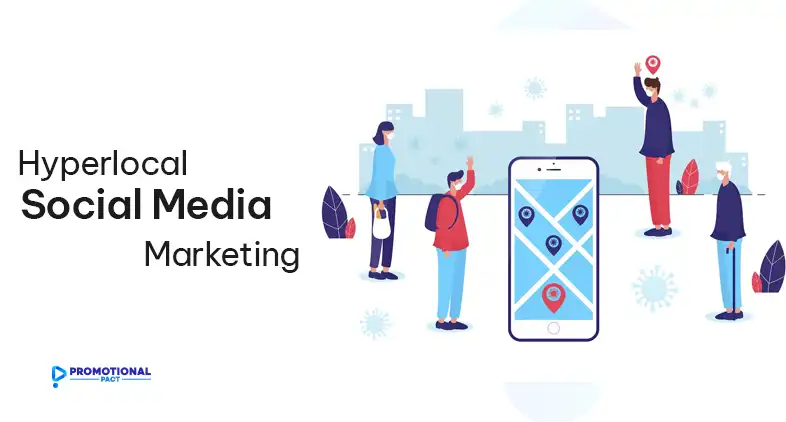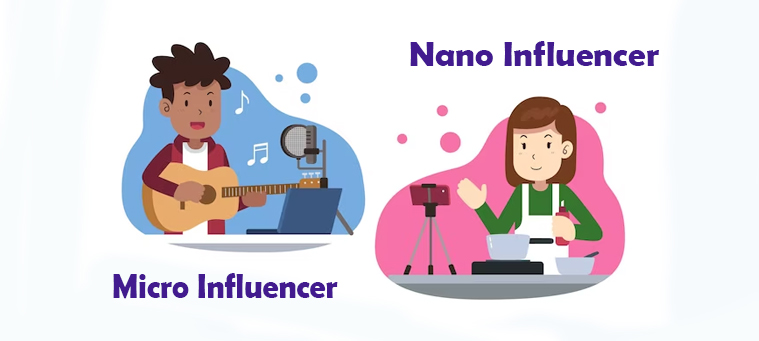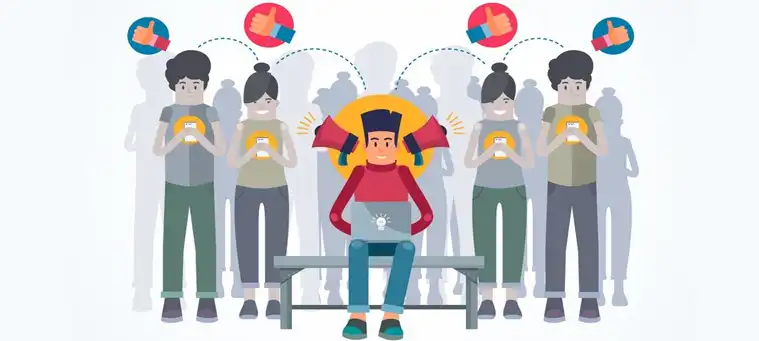
These days, businesses need more than just a broad social media presence to stand out. While general social media marketing strategies reach vast audiences, hyperlocal social media marketing targets a specific geographic area—whether it’s a neighborhood, town, or even a college campus. This hyper-targeted approach allows businesses to build stronger connections with local customers, enhance community engagement, and ultimately drive sales.
This article will guide you through the fundamentals of hyperlocal social media marketing, how to choose the right platforms, create engaging content, and track your success.
What is Hyperlocal Social Media Marketing?
Hyperlocal social media marketing is the practice of targeting a small, specific geographic area using social media platforms to engage with local customers. Instead of focusing on a broad audience, businesses narrow their efforts to a particular community, town, or neighborhood, often catering to customers’ hyperlocal interests and needs.
A great example of this is Facebook Groups focused on a neighborhood or community. Businesses can join these groups, share relevant information, and engage with people in a specific location. Similarly, Nextdoor, a platform dedicated to neighborhoods, allows businesses to interact directly with locals and promote services in the immediate area.
The goal of hyperlocal social media marketing is to foster relationships, build trust, and increase foot traffic to physical locations. This targeted marketing approach has grown in importance as customers increasingly prefer personalized interactions with brands.
Why Hyperlocal Social Media Marketing Matters
1. Increased Engagement with Local Audiences
Engaging local customers through social media results in higher participation and interaction. Local businesses often see greater engagement rates on platforms like Instagram when they use geo-tagging and local hashtags because customers relate more to content about their community. For example, posts that include location tags, such as “#BrooklynEats”, receive up to 79% higher engagement than those without.
2. Improved Brand Loyalty and Community Building
Local businesses thrive by building strong relationships within their communities. Hyperlocal social media marketing creates opportunities for businesses to engage with their customers in a personal way. By responding to comments, sharing local stories, and participating in community events, businesses can strengthen their relationship with customers, building trust and long-term loyalty.
3. Cost-Effective Advertising
Compared to broader social media campaigns, hyperlocal marketing is often more cost-effective. Because you’re targeting a smaller, more specific group, businesses can allocate smaller budgets for highly effective advertising. For example, Facebook Ads allows businesses to target users in a specific geographic radius, ensuring you only spend money to reach those most likely to visit your store or website.
4. Increased Foot Traffic and Sales
Hyperlocal social media marketing helps businesses drive real-world traffic. For instance, by promoting special offers or events specifically for their local audience, businesses can encourage people to visit their stores. Studies show that 70% of users who conducted a local search on their smartphone visited a store within a day (Google, 2022). Combining this with hyperlocal social media engagement increases foot traffic and sales.
Now that you know what is hyperlocal social media marketing, let’s now discuss how you can take advantage of it to elevate your business.
Understanding Your Target Audience
A successful hyperlocal marketing strategy starts with knowing your target audience. Understanding who your customers are and what they value is essential in crafting a message that resonates.
Demographics
The first step is identifying the demographic profile of your customers. Age, income, and interests all play a role in understanding their preferences. For example, a local coffee shop targeting college students will benefit from knowing their age group (18-25), interests (studying, social gatherings), and social media habits.
Online Behavior
Next, businesses need to analyze how their target audience behaves online. Which platforms do they spend the most time on? What type of content do they prefer—stories, images, videos? Tools like Facebook Insights or Instagram Analytics offer businesses valuable insights into user demographics and online behaviors, helping to guide content strategy.
Example: A study by Pew Research (2023) shows that 75% of adults aged 18-24 use Instagram as their primary social media platform, making it a strong contender for businesses targeting younger local audiences.
Choosing the Right Social Media Platforms
Selecting the right platforms is critical for the success of hyperlocal social media marketing. Different social media platforms offer unique benefits, and businesses must choose based on where their target audience spends time and how they engage with content.
Facebook Groups and Events
For local communities, Facebook remains one of the most powerful platforms. Businesses can join or create Facebook Groups tailored to specific neighborhoods, host local events, and engage directly with the community. For example, a bakery in a neighborhood can create a Facebook Group for “Best Eats in [Neighborhood]” and share promotions, customer stories, or event announcements.
Nextdoor
Nextdoor is designed for hyperlocal interactions and is growing rapidly among local businesses. It’s the perfect platform for businesses that want to interact directly with their local neighborhoods. On Nextdoor, businesses can share offers, events, and even local news while participating in neighborhood discussions.
Instagram and TikTok
For visually driven brands such as fashion retailers, cafes, or gyms, platforms like Instagram and TikTok offer a chance to reach local customers with visually compelling content. With geotags, businesses can tag their location, making it easier for local users to discover them. According to Instagram’s data, 60% of users learn about new products on the platform, and many prefer following local businesses for updates.
Creating Engaging Content
Once you’ve chosen the right platforms, the next step is crafting engaging content that resonates with your local audience.
Content Calendar
Developing a content calendar helps ensure consistency in posting and engaging with your audience. Plan content around local events, seasons, and holidays that matter to your community. For instance, if your business is a local ice cream shop, you can create posts around summer events, local festivals, or even National Ice Cream Day.
Types of Content
Engaging hyperlocal content often includes:
- Local News and Events: Keep your audience informed about community news or local happenings.
- Product Promotions: Promote products with special offers exclusive to the local audience.
- Behind-the-Scenes: Showcase your team and business culture to give a human face to your brand.
- Customer Testimonials and Stories: Share success stories from satisfied local customers to build trust and credibility.
Leveraging Location-Based Features
Geotagging and Check-ins
Social media platforms like Instagram and Facebook allow businesses to use geotags to tag their location, making it easier for users in the area to find them. Encourage your customers to check in when visiting your business. According to Facebook, posts with location tags receive 79% higher engagement.
Example Image Suggestion: Search for an image with people using their phones in a local café, with location tags visible on their social media posts.
Geo-Targeted Ads
Platforms like Facebook and Instagram offer geo-targeting options that allow businesses to serve ads only to users in a specific area. This is particularly effective for promotions or events exclusive to a certain locality. For example, a restaurant offering a discount for a local football game can target users within a five-mile radius of the stadium.
Building Local Relationships
Creating lasting relationships with your local audience goes beyond posting content. It requires active participation in the community.
Engage with Local Communities
Join local conversations, groups, and forums on platforms like Facebook or Nextdoor. Respond to user comments and engage in discussions about local topics. For example, if a user asks for recommendations for local florists, responding with information about your business or other businesses in the area builds goodwill and trust.
Measuring and Optimizing Your Strategy
Tracking your performance ensures that your hyperlocal marketing efforts are yielding results. Social media platforms like Facebook Insights and Instagram Analytics offer useful metrics such as engagement rate, reach, and click-through rates.
Key Metrics to Track
- Engagement Rate: The ratio of interactions (likes, comments, shares) compared to followers or reach.
- Click-Through Rate (CTR): The percentage of users who clicked on your post or ad link.
- Foot Traffic and Sales: Use promotions or exclusive offers to measure the increase in foot traffic and sales.
Analyzing these metrics allows you to make data-driven adjustments. For example, if a post promoting a local event performs exceptionally well, you may want to create similar content in the future.
Wrapping Up
Hyperlocal social media marketing is a powerful way to engage with your local community, build strong customer relationships, and increase sales. By targeting a specific geographic area, businesses can create more personalized and impactful marketing campaigns, foster a sense of community, and drive real-world results.
To get started with hyperlocal social media marketing, remember to:
- Understand your local audience
- Choose the right platforms for engagement
- Create compelling, location-focused content
- Leverage geotagging and local influencers
- Measure and optimize for long-term success
As businesses continue to embrace hyperlocal strategies, the future holds exciting opportunities for local community engagement through emerging technologies like augmented reality and AI-powered location-based marketing.

